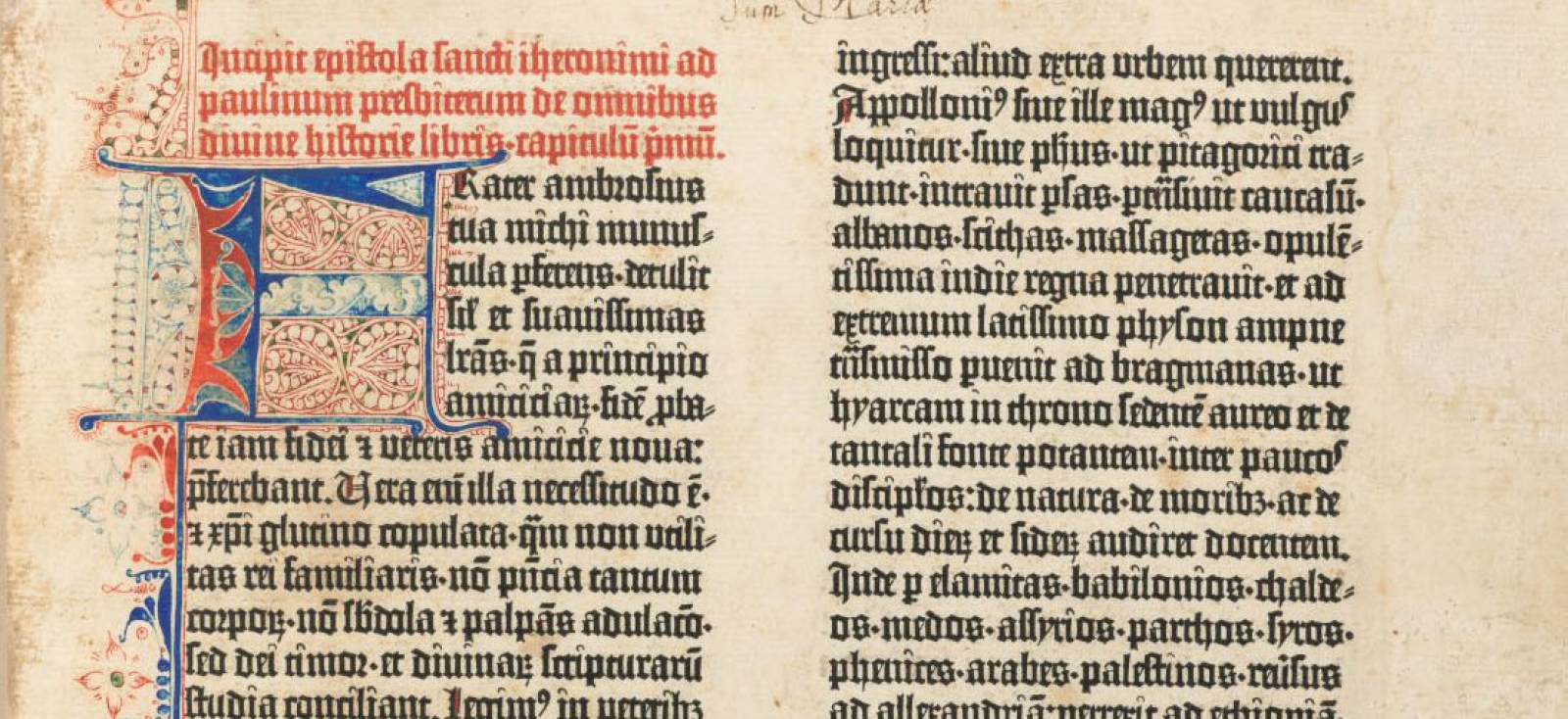
History
The Gutenberg Bible is the first major work printed in Europe with movable metal type.
The text is St. Jerome’s Latin Vulgate version, prepared by biblical scholars of Paris in the 13th century in an effort to produce a consistent and useful Latin text.
The Bible’s printer, Johann Gutenberg, was born in Mainz (around 1397) and trained as a goldsmith in Strasbourg. In 1448 he set up a foundry and press in Mainz, borrowing money for the venture from the banker Johann Fust (1400-66). Gutenberg died in Mainz on February 3, 1468.
Estimates of the Bible’s print run range from 70 to as many as 270 copies, with the majority printed on paper and up to 45 on vellum. Chapter headings and capitals were left to be rubricated by hand, a common practice in early printed books.
The Harvard copy, printed on paper, is one of the 48 surviving copies, only 23 of them complete. It is bound in two volumes and one is always on display in the Harry Elkins Widener Memorial Rooms.

Provenance of the Harvard Gutenberg Bible
The first known owner of the Harvard copy was Johann Vlyegher, canon at the cathedral of Utrecht, who bequeathed it in 1471 to the Brigittine Monastery of Marienburg at Soest near Amersfoort, Netherlands.
In Napoleonic times it was acquired by Pierre Henri Larcher, at whose sale in Paris in 1814 it was purchased by Payne & Foss for John Lloyd.
About 1840 it was acquired by Lord Ashburnham, whose son sold it to Bernard Quaritch in 1896.
A short time later it was bought by Robert Hoe who sold it in 1912 when it was bought again by Quaritch.
It was sold for Quaritch by Dr. A.S.W. Rosenbach to P.A.B. Widener, grandfather of Harry Elkins Widener.
On May 8, 1944 it was presented to Harvard College Library by Mr. George D. Widener on behalf of his sister Mrs. Widener Dixon and himself.
Accessing These Materials
Selected pages from both volumes have been digitized and are available online: